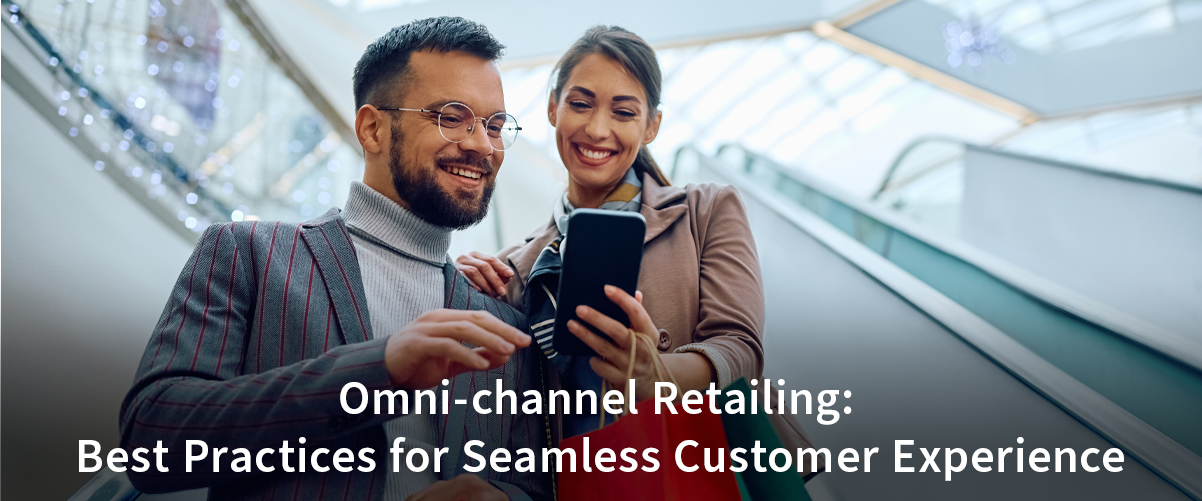
Omni-channel retailing represents a significant paradigm shift in the retail industry. Unlike multi-channel retailing, which offers multiple separate channels for customers to engage with a brand, omni-channel retailing integrates these channels to provide a cohesive and seamless customer experience. This approach ensures that whether a customer is shopping online from a mobile device, a desktop, or in a brick-and-mortar store, the experience is consistent and interconnected.
By adopting omni-channel strategies, retailers can meet the evolving expectations of consumers who demand flexibility and convenience. This shift is not just about technology but also requires a rethinking of business processes, customer engagement strategies, and data integration.
Key Components of an Effective Omni-channel Strategy
An effective omni-channel strategy hinges on several key components. Firstly, having a unified customer database is crucial. This allows retailers to track customer interactions across various touchpoints and personalize their experience. Secondly, seamless integration of inventory management systems ensures that customers have real-time information on product availability, regardless of the channel they are using.
Additionally, consistent branding and messaging across all channels help in building a cohesive brand image. Implementing robust analytics tools to gather insights from customer data can also drive more informed decision-making. Lastly, training staff to handle omni-channel interactions ensures that the service quality remains high across all platforms.
Leveraging SAAS Platforms for Omni-channel Retailing
SAAS (Software as a Service) platforms play a pivotal role in the success of omni-channel retailing. These platforms offer scalable solutions that can integrate various retail channels, streamline operations, and provide valuable customer insights. By leveraging SAAS platforms, retailers can reduce the complexity of managing multiple systems and focus on enhancing the customer experience.
Features like cloud-based inventory management, customer relationship management (CRM), and point of sale (POS) systems are essential components of a robust SAAS platform. These tools enable real-time data synchronization across channels, ensuring that customers receive accurate and up-to-date information, which is crucial for maintaining a seamless shopping experience.
Best Practices for Creating a Seamless Customer Journey
Here are some best practices for achieving a seamless omni-channel customer experience:
- Customer-Centric Approach At the heart of any successful omni-channel strategy is a deep understanding of customer behavior. Retailers need to gather data from every interaction—whether it’s browsing online, interacting via mobile apps, or purchasing in-store—to create personalized experiences that resonate with their audience. Analyzing customer data helps identify preferences, anticipate needs, and offer relevant recommendations. Retailers can use this information to tailor marketing campaigns, enhance customer service, and build long-term loyalty.
- Unified Technology Infrastructure To manage the complexities of an omni-channel approach, retailers must ensure they have a robust and centralized technology infrastructure. Integration of various systems—like Customer Relationship Management (CRM), Enterprise Resource Planning (ERP), and Point-of-Sale (POS)—is crucial to streamlining operations. This integration enables real-time data sharing across channels, providing a unified view of customer interactions and inventory levels. Investing in scalable and flexible technology solutions ensures the infrastructure can adapt to evolving business needs and market trends.
- Inventory and Supply Chain Management Effective inventory and supply chain management is critical for omni-channel retail success. Real-time inventory visibility enables retailers to avoid stockouts or excess inventory across channels. Implementing advanced analytics and automation tools can optimize demand forecasting, inventory allocation, and replenishment processes. Efficient order fulfillment processes—like click-and-collect or ship-from-store—can significantly improve customer satisfaction. Additionally, leveraging technologies like RFID and IoT can enhance inventory tracking and management.
- Mobile Optimization With the increasing use of smartphones for shopping, optimizing mobile experiences is essential. Retailers should ensure their websites and apps are mobile-friendly, providing a seamless browsing and purchasing experience on all devices. Key elements of mobile optimization include responsive design, fast loading times, intuitive navigation, and secure payment options. Incorporating features like mobile wallets, personalized push notifications, and mobile-exclusive promotions can enhance the mobile shopping experience and drive engagement.
- Social Media Integration Leveraging social media platforms for marketing and customer engagement can enhance the omni-channel experience. Retailers can use social media to promote products, offer personalized recommendations, and interact with customers in real-time. By integrating social media with e-commerce platforms, retailers can enable social shopping features like shoppable posts, live streaming, and user-generated content. Engaging with customers through social media also provides valuable insights into their preferences, behaviors, and sentiments, helping retailers refine their strategies.
- In-Store Experience While online shopping continues to grow, physical stores remain crucial for building brand connections and offering unique customer experiences. Retailers should focus on creating engaging in-store environments that complement their online presence. Strategies include offering experiential retail, such as interactive displays, product demonstrations, and personalized consultations. Leveraging in-store technologies like digital kiosks, mobile POS systems, and beacons can enhance the shopping experience. Additionally, integrating online and offline channels—such as buy online, pick up in-store (BOPIS)—provides customers with convenient options and drives foot traffic.
- Consistent Branding and Messaging Maintaining consistent branding and messaging across all channels is vital for a cohesive omni-channel experience. Customers should recognize your brand and receive the same level of service, whether they are shopping online or in-store. Developing a unified brand voice and visual identity ensures consistency in marketing communications, product presentations, and customer interactions. Implementing cross-channel marketing campaigns and personalized content strategies reinforces brand recognition and builds trust with customers.
Why ETP V5 is the Best Solution for Omni-channel Retailing
ETP V5 stands out as an exceptional solution for omni-channel retailing due to its comprehensive and integrated features. It provides end-to-end solutions that cover everything from inventory management and CRM to POS and analytics. The platform is designed to deliver a unified and seamless experience across all retail channels, ensuring that customers have a consistent experience regardless of where they interact with the brand.
One of the key strengths of ETP V5 is its ability to provide real-time data synchronization, which is crucial for accurate inventory management and customer insights. Moreover, the platform’s robust analytics tools enable retailers to make data-driven decisions and personalize the shopping experience effectively. With its scalable and flexible architecture, ETP V5 can adapt to the evolving needs of retailers, making it the best solution for omni-channel retailing.







